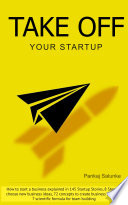

The book emphasizes the importance of understanding the lifecycle of a startup, which includes stages like ideation, validation, growth, and scaling. Each stage demands different strategies, resources, and mindsets. Founders must recognize where their startup currently stands to make informed decisions about product development, market entry, and funding. This understanding helps in avoiding common pitfalls associated with premature scaling or lack of market fit. The authors provide frameworks and models to help entrepreneurs assess their position in the lifecycle, allowing them to tailor their approaches accordingly.
Continue readingA strong foundation is critical for any startup. This idea revolves around establishing a clear vision, mission, and values from the outset. The book discusses how these elements guide decision-making and shape the company culture. Founders are encouraged to articulate their goals clearly and ensure that their team is aligned with these objectives. The authors stress the importance of hiring the right people who share the startup's vision and can contribute positively to its culture. A solid foundation not only attracts talent but also fosters resilience in challenging times.
Continue readingCustomer feedback is portrayed as a vital component of product development. The book advocates for a customer-centric approach, urging founders to actively seek and incorporate feedback into their product iterations. This process helps in validating assumptions, refining features, and enhancing user experience. The authors provide practical tools for gathering feedback, such as surveys, interviews, and usability testing. By fostering a culture of listening to customers, startups can better align their offerings with market needs, ultimately increasing their chances of success.
Continue readingIn the fast-paced world of startups, agility and adaptability are crucial for survival. The book discusses the need for founders to remain flexible and responsive to changing market dynamics and customer preferences. It emphasizes the importance of iterative development and pivoting when necessary. The authors share case studies of successful startups that embraced change and leveraged it to their advantage. By cultivating a mindset that values experimentation and learning from failures, entrepreneurs can navigate uncertainties and seize new opportunities.
Continue readingFundraising is a significant aspect of startup growth, and the book delves into effective strategies for securing investment. It covers various funding sources, including bootstrapping, angel investors, venture capital, and crowdfunding. The authors provide insights into crafting compelling pitches, understanding investor expectations, and building relationships with potential backers. Additionally, the book highlights the importance of financial literacy for founders, enabling them to make informed decisions about their funding options and manage their finances effectively.
Continue readingThe book emphasizes the necessity of developing a sustainable business model that can withstand market fluctuations and competition. It discusses different revenue models and the importance of understanding the cost structure and customer acquisition strategies. The authors encourage entrepreneurs to think critically about their value proposition and how it translates into profitability. By focusing on sustainability, startups can create long-term value for their stakeholders and avoid the common trap of chasing short-term gains at the expense of their future.
Continue readingLeadership is a central theme in 'Take Off Your Startup.' The authors discuss the unique challenges that startup leaders face and the skills required to navigate them. They emphasize the importance of emotional intelligence, communication, and vision in leading a team. The book provides practical advice on how to build trust, foster collaboration, and inspire innovation within the team. By cultivating strong leadership qualities, founders can create a positive work environment that motivates employees and drives the startup toward its goals.
Continue reading